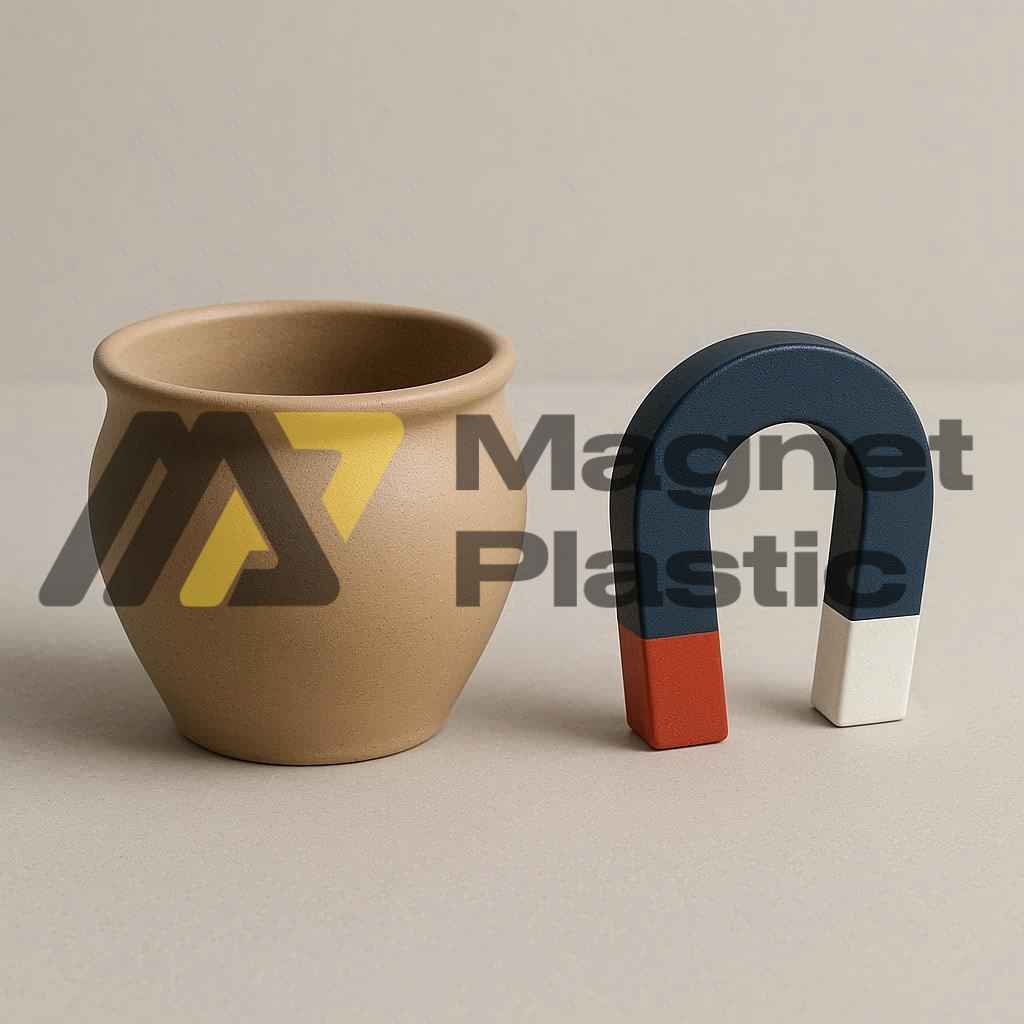Why Are Magnetic Separators Used in the Production of Porcelain and Ceramics?
1. Tradition and Technology in Ceramic Manufacturing
The production of ceramics and porcelain combines traditional craftsmanship with modern industrial techniques. Each product—whether tiles, tableware, or decorative pieces—goes through stages such as molding, drying, glazing, and firing. To achieve a flawless final result, it is essential to use raw materials that are clean and free from contaminants.
2. The Problem of Metal Contamination
During the extraction and processing of kaolin, clay, or glaze, metallic particles can enter the raw materials. These particles often come from tools, machinery, or equipment wear. Even when microscopic, they can cause visible defects after firing, such as stains, black spots, or surface imperfections—reducing the value of the product.
3. The Role of Magnetic Separators
Magnetic separators and filters are used to effectively remove these unwanted ferrous particles. Installed in strategic points of the production line—such as conveyors, silos, or pipes—they ensure that raw materials remain free of metal contamination before being transformed.
4. Separation in Dry and Liquid Materials
For dry materials like kaolin or powdered clay, magnetic bars and grids equipped with high-intensity neodymium magnets are used. These can capture iron particles as small as one micron.
In liquid products such as glazes or ceramic slip, magnetic filters are inserted into pipelines. Depending on contamination levels, they can feature manual, semi-automatic, or fully automatic cleaning systems.
5. Quality and Economic Benefits
Magnetic separation significantly reduces visual defects, customer complaints, and the number of rejected products. It also prevents equipment wear, improves the efficiency of kilns and glazing systems, and ensures stable product quality—resulting in higher profitability and process reliability.
6. Types of Magnetic Separators and Their Uses
- Magnetic bars and grids – ideal for powders and dry raw materials.
- Inline magnetic filters – used in glazes and liquid ceramic suspensions.
- Automatic systems – allow continuous operation and eliminate the risk of human error during cleaning.
7. Other Uses of Magnets in the Ceramic Industry
Beyond separation, magnets are also used in magnetic bases to secure molds during forming processes. Encased in a steel housing, these magnets are protected against mechanical damage while concentrating magnetic force—ensuring precision and faster setup.
8. A Key Tool for Efficiency and Excellence
Magnetic separators are now indispensable in modern ceramic and porcelain production. They ensure raw material purity, enhance product aesthetics, minimize defects, and increase competitiveness. Companies like Magnetplastic develop high-performance neodymium magnetic systems tailored to each production need, delivering quality, safety, and efficiency throughout the process.
